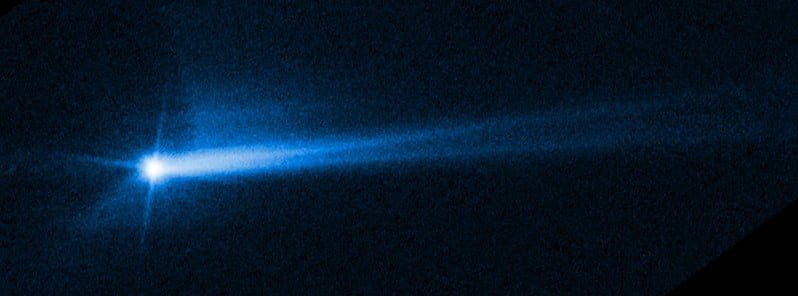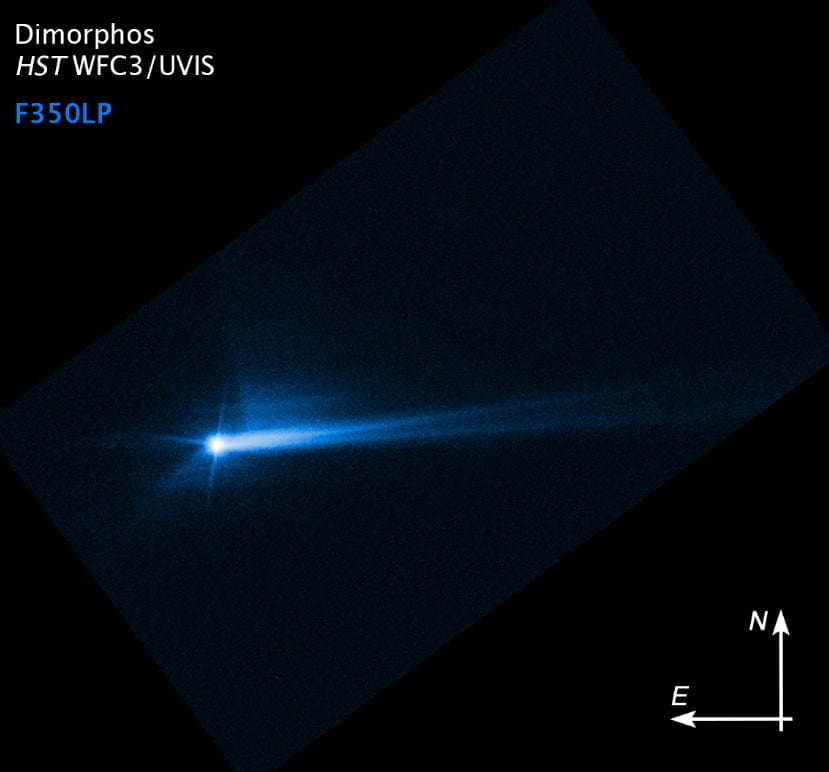DART successfully altered the orbit of asteroid Dimorphos

Data gathered by NASA’s Double Asteroid Redirection Test (DART) investigative team over the last two weeks suggest that the spacecraft’s kinetic encounter with its target asteroid, Dimorphos, successfully altered the asteroid’s orbit.
- This is the first time humanity has purposefully altered the motion of a celestial object, as well as the first full-scale demonstration of asteroid deflection technology.
Dimorphos took 11 hours and 55 minutes to orbit its larger parent asteroid, Didymos, prior to DART’s collision. Since DART’s planned collision with Dimorphos on September 26, astronomers have been measuring how much time has passed using telescopes on Earth and determined that its orbit around Didymos was decreased by the spacecraft’s impact to 11 hours and 23 minutes, with a margin of error of around 2 minutes.1
Prior to the encounter2, NASA defined a successful Dimorphos orbit period change as one of 73 seconds or greater. According to preliminary data, DART outperformed this minimum benchmark by more than 25 times.

The team is still collecting data from ground-based observatories and radar facilities throughout the world and regularly upgrading the period measurement to improve its precision.
The emphasis is now on determining the efficiency of momentum transfer from DART’s 22 530 km (14 000 miles) per hour impact with its target.
This involves the additional examination of the ejecta – the several tons of asteroidal rock ejected and sent into space by the impact. The recoil from this debris discharge significantly increased DART’s push towards Dimorphos, similar to how a jet of air shooting out of a balloon sends the balloon in the other direction.
More information about the asteroid’s physical attributes, such as the characteristics of its surface and how strong or weak it is, is required to correctly understand the influence of the rebound from the ejecta. These issues are still being looked into.
References:
1 NASA Confirms DART Mission Impact Changed Asteroid’s Motion in Space – NASA – October 11, 2022
2 DART hits asteroid Dimorphos in the world’s first planetary defense technology demonstration – The Watchers – September 27, 2022
Featured image: This imagery from NASA’s Hubble Space Telescope from October 8, 2022, shows the debris blasted from the surface of Dimorphos 285 hours after the asteroid was intentionally impacted by NASA’s DART spacecraft on September 26. Credit: NASA/ESA/STScI/Hubble

Commenting rules and guidelines
We value the thoughts and opinions of our readers and welcome healthy discussions on our website. In order to maintain a respectful and positive community, we ask that all commenters follow these rules:
We reserve the right to remove any comments that violate these rules. By commenting on our website, you agree to abide by these guidelines. Thank you for helping to create a positive and welcoming environment for all.